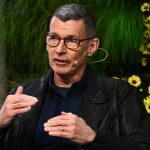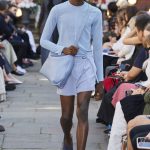A stairway spirals the height of the five-story building. It’s bathed in daylight via the articulated glass lozenge in which it’s encased. Three stories up is a giant suspended egg.
No, it’s not a futuristic hallucination: We’re inside Le Visionnaire, L’Oréal’s newest “creative laboratory” at 14 rue Royale, bang in the center of Paris. The 45,208-square-foot space is dedicated to innovation, brainstorming and the study of trends. The purpose? To invent the L’Oréal of the future, fusing cutting-edge technology and sensory perception.
The building, which officially opened during Paris Fashion Week, is based around the principles espoused by visionary L’Oréal CEO François Dalle — who headed up the Group from 1958-1984 — after which its 21 rooms are named: There’s Audacity (L’Audace), Rule Breaking (La Brêche) and Inductive Reasoning (L’Induction). A QR code at the entrance of each space reveals the story behind it.
“It’s a recognizable object that gives the space a really strong identity,” says Le Visionnaire’s architect Alain Moatti of the egg, adding that it’s symbolic of the creation process itself.
Photo: Florence Joubert
When she was charged with the project’s realization some six years ago, L’Oréal project manager Cristina Parma put the embryo idea to a panel of 120 employees. “We asked people ‘what would you dream about?'” she tells Fashionista. “You can have a brilliant idea, but collective intelligence is even richer.”
It was during one of these sessions that the team conceived of Le Visionnaire’s Atelier or “beauty kitchen,” which is decked out like the test kitchen of a culinary school, with rows of work stations in brushed chrome where people could learn about the products and their formulas or “recipes” — hands-on.
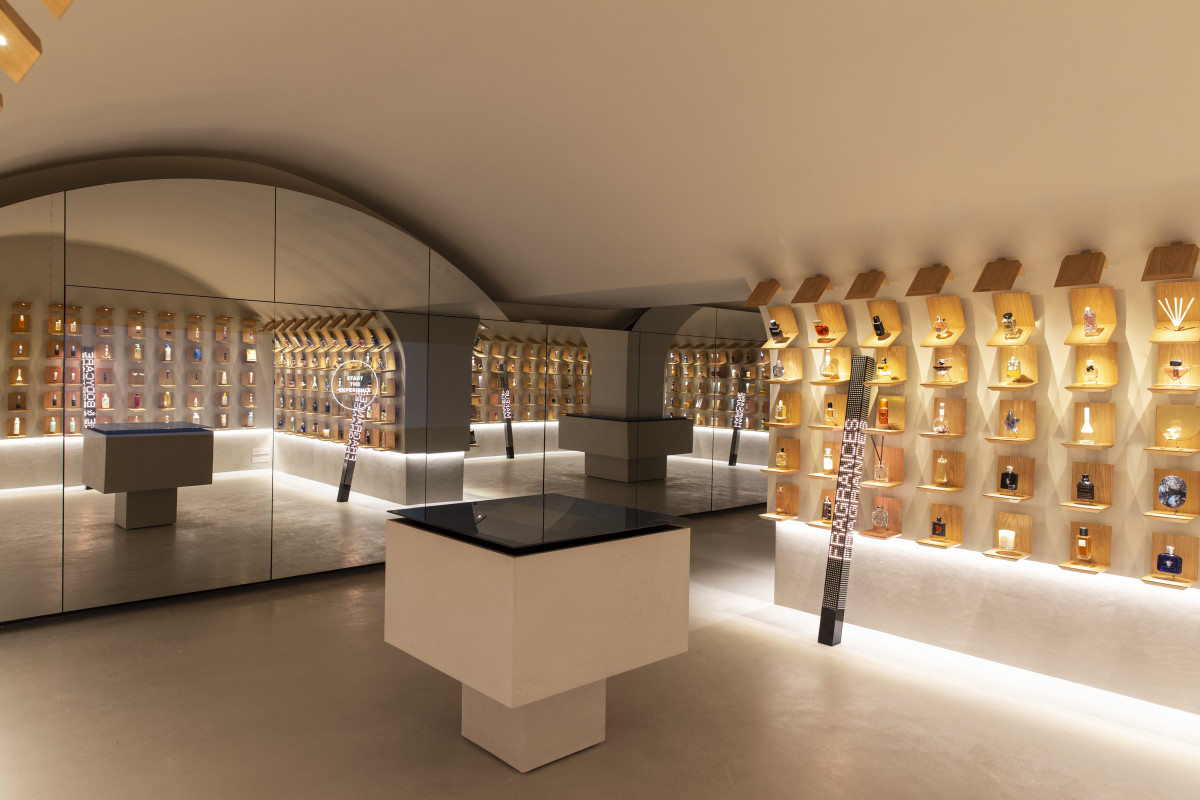
Photo: Florence Joubert
The brief was a space dedicated to the transmission of savoir-faire in makeup and skin care, and the proposed idea drew inspiration from the set of global TV franchise “Top Chef.” “We found it very smart, so we included it,” says Parma. “‘Top Chef’ is not just in France, it’s a worldwide phenomena, and we have a huge amount of different nationalities on our teams at L’Oréal. The idea proved attractive because it was practical and resonated globally, but could also be adapted locally.”
Parma maintains that “beauty is like a kitchen where you have different ingredients and textures,” adding that one of Dalle’s adages was that L’Oréal employees should touch a product every day. To that end, the atelier will also play host to metier seminars by L’Oréal lab experts for executives within the corporation. “When someone graduates from a business school, maybe they have never touched a lipstick or (don’t) know how you mix an emulsion or create a pigment,” she said.
Three of the spaces within Le Visionnaire are interactive: La Route, which houses the L’Oréal archive; Les Marques, which displays around 390 of the most iconic products from the Group’s 36 brands; and the eponymous Le Visionnaire, or Visionary Wall, an AI-powered digital forecasting tool featuring a ribbon of touchscreens.
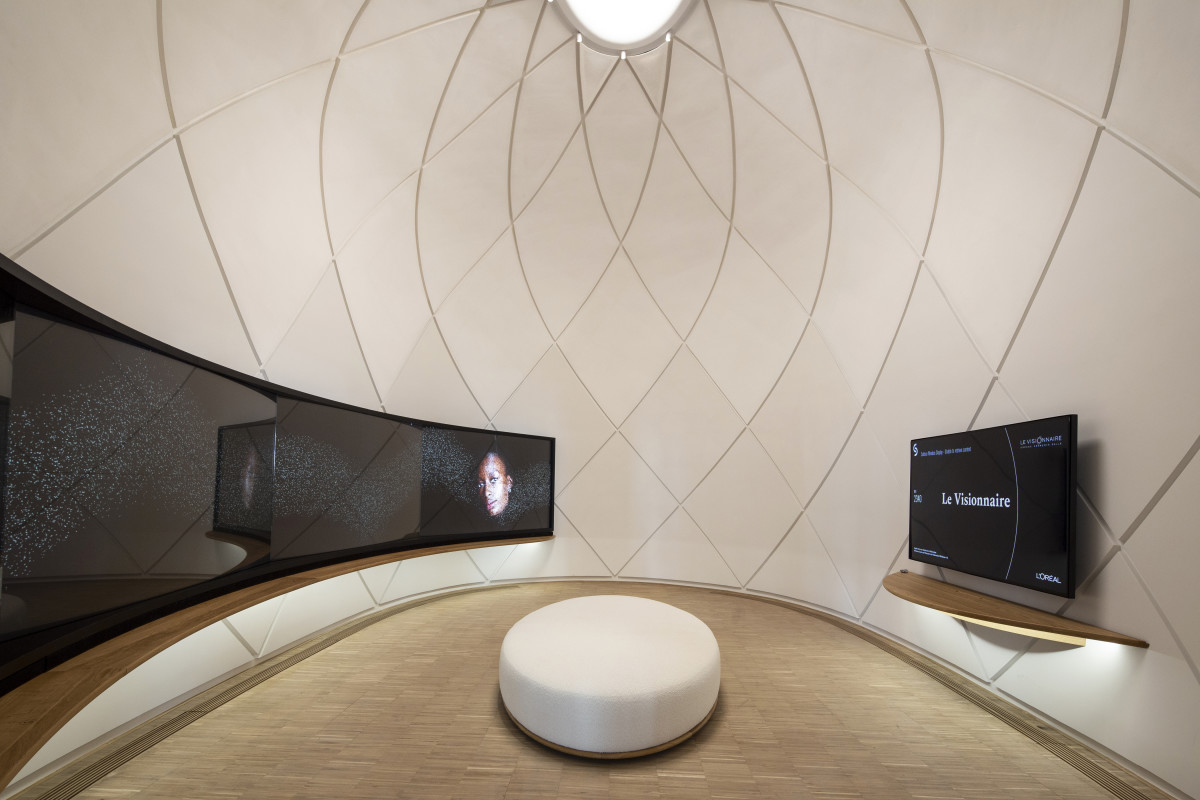
Photo: Florence Joubert
All three deploy Bluetooth technology whereby visitors can place their smartphones on individual docks and select multimedia content from speeches to campaigns via touchscreens. The chosen content is then emailed to their accounts.
Palma first encountered the system in the United States at the Cleveland Museum of Art and later at the Smithsonian in New York, where visitors are given a pen which they can use to select content. The pen is twinned with their ticket number so when they return home they can enter the number on a website or app and download their content.
“One of the risks at L’Oréal is that we have so much information that you can easily get lost,” she says, “so we tried to create a sort of entrance path, a smart selection of relevant content that can help newcomers to go deeper into its culture and history.”

Photo: Florence Joubert
While the data sources available in the archive and brand rooms are fixed, the Visionary Wall — housed inside aforementioned egg itself — is a complex prospective tool harnessing dynamic or constantly updating data. The AI presents the user with theme-based waves, selected according to aesthetic, chromatic and semantic relevance.
“You can come here every day and it’s different,” says Parma. “When the ‘Barbie’ movie came out everything was pink, and when it’s Halloween you’ll be able to see all the crazy makeup worldwide.”
She also cites an example from a few years ago when the team spotted the TikTok account of a Chinese girl who had devised an unusual way of applying nail polish, dropping different colors into a glass of water into which she’d dip her nails. The fact that the method involved five different nail colors, she says, “was crazy interesting for us, as we’d sell five colors, not one,” adding that it was a trend that could influence many other people as well.
“This kind of tool allows us to observe this sort of phenomena very quickly. You don’t make a product for it to be on the shelf, but for people to appropriate and invent new ways to feel more comfortable. This is the real purpose of our business,” notes Parma.
All the interactive elements have been developed for L’Oréal by New York-based Local Projects, the company behind the tech at Cleveland and the Smithsonian.

Photo: Florence Joubert
L’Oréal also collaborated with IRCAM (Institute for Research and Coordination in Acoustics/Music) to create three different sounds for the interactive spaces on which they worked for three or four months, Parma reveals: “We wanted the brain to work properly so didn’t want to use music or a play list.”
According to Parma, you need a certain kind of sound to promote concentration when you’re working in the archive, and something with more of a “wow effect” for the brands room (it was derived from the sound of clinking glass in a nod to the glass bottles housing many of the products). Meanwhile, for the Visionary Wall, they developed a sound that helps to promote creativity in the brain. IRCAM has also worked on projects for Paris’ Pompidou Center. The technologists barely even talk, Parma marvels: “They spend 12 hours a day in sound cabins.”
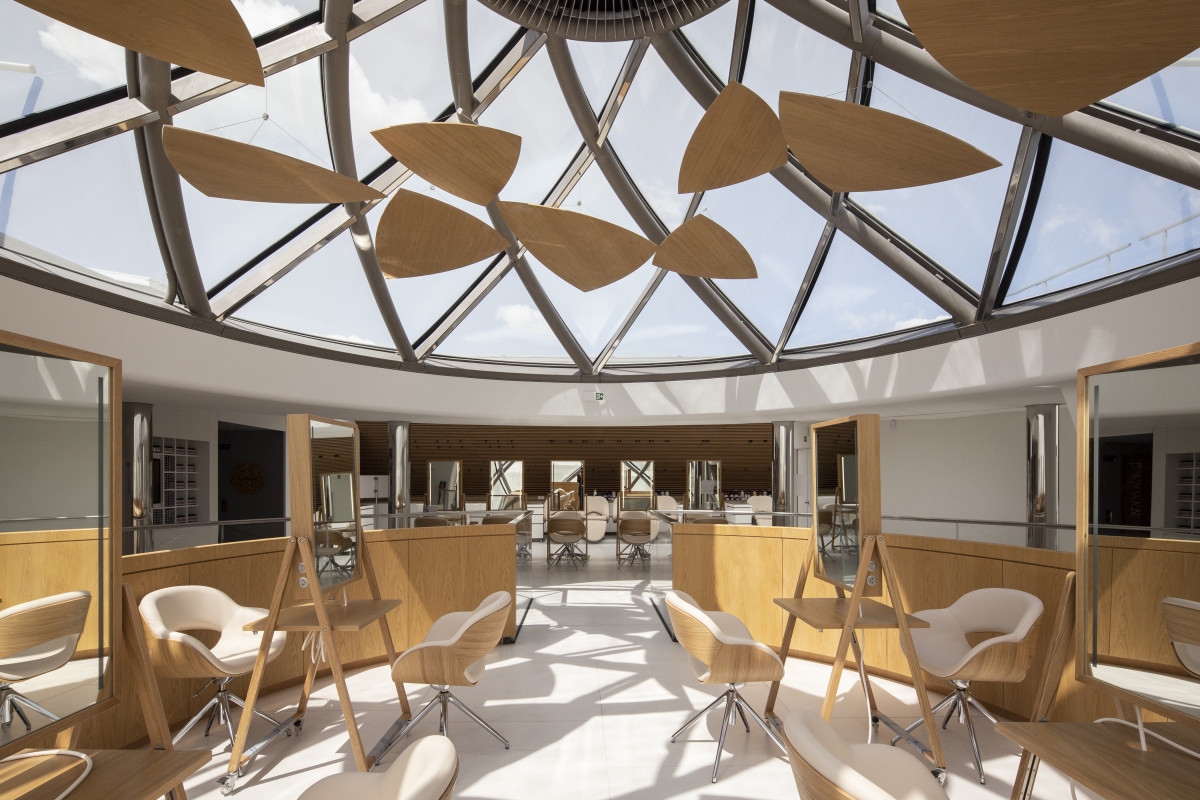
Photo: Florence Joubert
There’s intention and purpose baked into all aspects of the center’s design, Parma emphasizes. “Nothing is just decorative,” she says. “We wanted to give meaning to everything; everything has a function.” In fact, many of the spaces are modular with flexible multi-purpose set-ups. The main events space can be reconfigured every day for hosting cocktails, presentations and filming for live events. It’s lit by 140,000 suspended glass lights reminiscent of laboratory test tubes.
The top floor at Le Visionnaire houses a fully revamped, state-of-the art hair academy and training space. The natural light afforded by its glass roof (the tip of the lozenge) is crucial for discerning true hair colors, notes Parma.
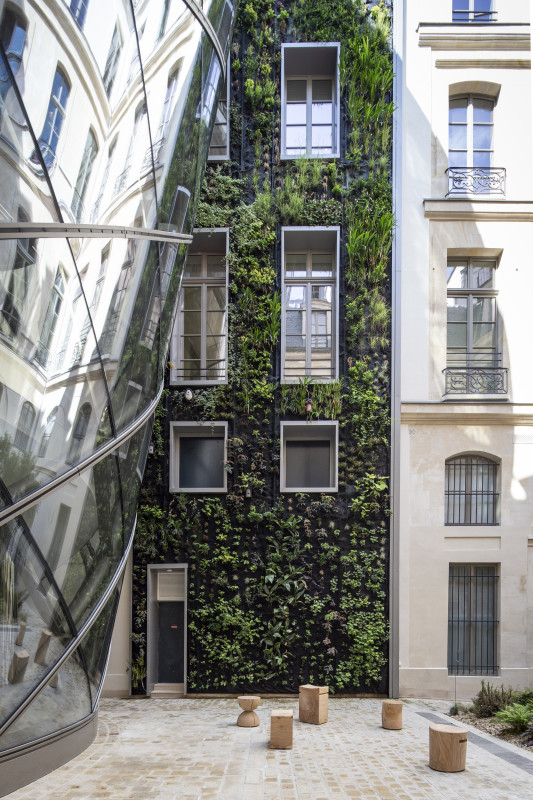
Photo: Florence Joubert
The company also incorporated some sustainable practices while building the center. The irrigation system created by Paris-based start-up Gjosa, for example, has been devised to use the minimum amount of water possible; the courtyard features a living wall and the building as a whole has been certified ‘excellent’ by Certivea, which is the highest level in its HQE sustainability index. Accessibility is a priority as well: Differing floor heights have been leveled out via an undulating system — like gentle waves on a beach as opposed to ramps — to facilitate access for visitors using wheelchairs.
L’Oréal’s aim is to make the center a space that serves a multitude of purposes, beyond just internal development and innovation. While some areas, like the Visionary Wall, are reserved for employees, the majority welcome a wider universe from the fashion and luxury industry — influencers, clients and journalists — as was the case during the tenure of Dalle.
Want the latest fashion industry news first? Sign up for our daily newsletter.


